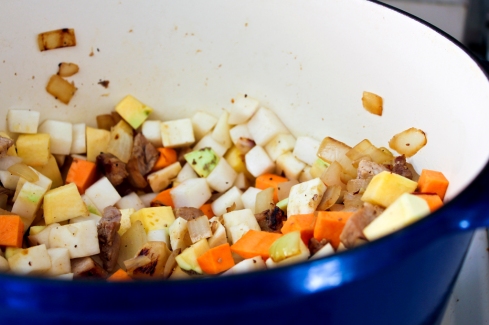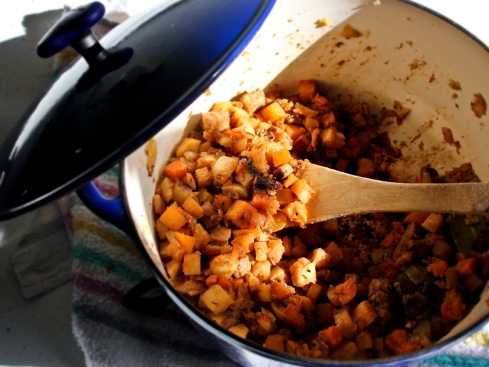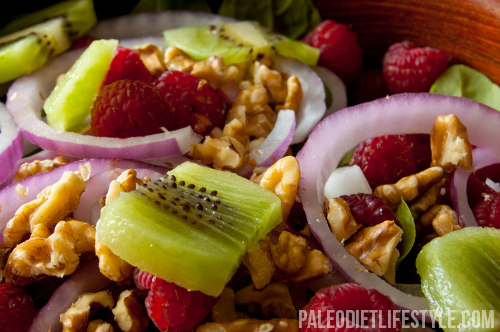Ah, winter. Yes, it's cold and flu season again and you're looking for some relief. Although colds and flus are caused by different types of viruses, both can leave you feeling tired, coughing, feverish, achy and foggy-headed.
You've probably discovered that conventional medicine has little to offer the bleary-eyed sufferer. Over-the-counter remedies such as aspirin, and even prescription drugs, only suppress symptoms; they don't cure the illness or make you well any faster. While antihistamines dry sinuses, they can also irritate your nose and throat and prolong the infection. As for antibiotics, including penicillin, they don't target viruses at all and should only be prescribed if a bacterial infection follows the cold or flu.
Simply suppressing symptoms can impair your body's natural ability to fend off disease. Symptoms tell you what's wrong and what to do about it. Headaches, sore muscles and feeling tired indicate that you need rest, and fever or indigestion is a sign to eat lightly.
Herbal treatments help your body heal itself and boost natural immunity. Your cold or flu probably won't disappear immediately, but chances are you will get well sooner and more completely. Then, when next winter rolls along, you may be less likely to pick up a cold. You'll find plenty of herbal cold and flu remedies in the health-food store, or follow my simple recipes to make your own. In either case, have these remedies on hand in your medicine cabinet so that when the next cold or flu strikes, you'll be prepared.
Antiviral herbs
Researchers have discovered that some herbs destroy viruses, and they're studying ways to turn these herbs into pharmaceuticals. But you needn't wait. Among the herbs that have already been found to inhibit viruses, including the flu, are Lavender (
Lavandula angustifolia) and Eucalyptus (
Eucalyptus globulus). Also packing an antiviral punch are Rosemary (
Rosmarinus officinalis), Lemon Balm (Melissa officinalis), Hyssop (
Hyssopus officinalis), Peppermint (
Mentha piperita) and Tea Tree (
Melaleuca alternifolia). All of these herbs also foil bacteria responsible for infections of the throat, lungs, sinuses, ears and eyes that often tag on the heels of a cold or flu. In addition, they relax coughing spasms, aid digestion, and lower a fever by encouraging circulation and sweating. Tannin compounds found in other herbs such as White Oak bark (
Quercus alba) and Bayberry (
Myrica cerifera) destroy flu and other types of viruses, so it's no wonder they are traditional cold and flu treatments. You can even eat your way to good health by seasoning your food with Garlic (
Allium sativum), Thyme (
Thymus vulgaris), Marjoram (
Origanum majorana), Cinnamon (
Cinnamomum verum) and Black Pepper (
Piper nigrum) to eradicate viral and bacterial infections. Ginger (
Zingiber officinale) is not only antiviral, it also lowers fevers and reduces muscle soreness.
If you are looking for ways to make the medicine go down easier, mix cold and flu herbs with virus-fighting apple or grape juice. You can also make your own Ginger ale by adding sparkling bottled water to Ginger tea. Or, try Elderberry (
Sambucus nigra), which is not only sold as a part of herbal formulas but as pleasant-tasting tonic juice. Researcher Madeleine Mumcuoglu first learned about Elderberries' long history of use as a flu remedy from her mentor, Jean Linderman, Ph.D., who found that the berries help prevent the flu virus from invading healthy cells. Flu sufferers in her study got better faster with Elderberry compared to drug medications.
Immune herbs

Boosting your immune system with herbs will help you get better faster when you're sick and stave off future illness. Russian children were more resistant to a serious flu epidemic that swept through their town when given the Chinese herb Schisandra (
Schisandra chinensis). In another study, taking Siberian Ginseng (
Eleutherococcus senticosus) meant that people living in the cold regions of northeastern China got far fewer colds and had fewer cases of bronchitis. Lavender, Lemon (
Citrus limon), and Bergamot (
Citrus bergamia) stimulate the production of infection-fighting white blood cells called leukocytes. Studies show that people who take Echinacea (
Echinacea spp.), one of the most popular immune-enhancing herbs, came down with fewer colds. When the echinacea-takers did get sick, all of their symptoms - weakness, chills, sweating, sore throat, muscle and joint pain, and headaches - were less severe. Echinacea particularly helped anyone who tended to pick up several colds a year. One way the herb works is by strengthening a cell's protective membrane, making it less susceptible to viral invasion and more resistant to infection. Along with Licorice (
Glycyrrhiza glabra) and the Chinese herb Astragalus (
Astragalus membranaceus), Echinacea increases T-cell activity to improve general immunity.
Echinacea and Licorice seem to slow down viral replication by increasing the production of macrophages - white blood cells that devour viruses. When taken as a preventive to keep from getting sick in the first place, a good plan is to take echinacea for a week or two, then lay off of it for a week. This may also be true of other herbs that enhance the immune system. I'm often asked if this means echinacea is toxic. Not at all. Think of it as teaching your immune system how to operate, then giving it a chance to practice.
Other symptoms
Besides fighting viruses and bacteria directly, herbs can relieve unpleasant symptoms caused by colds and flus. Eucalyptus, Rosemary, Peppermint, and Bergamot thin and eliminate congestion, particularly in the sinuses. Mullein (
Verbascum spp.), Elecampane (
Inula helenium), and Horehound (
Marrubium vulgare) open up the lungs so you can breathe better. Anise (
Pimpinella anisum) suppresses coughing by working on the brain's cough center. Natural herbal aspirins such as Willow bark (
Salix spp.) or Meadowsweet (
Filipendula ulmaria) reduce fever and pain. Ginger and Peppermint can help settle an upset stomach.
The most popular antihistamine to relieve sinus congestion and dilate bronchial passages is Ephedra, or Ma Huang (
Ephedra sinica). Most herbal preparations are made with the whole herb, although formulas that use an "extra-strength" extract or derivative have run into controversy. The Ephedra debate mostly concerns people who frequently use large amounts of the plant in herbal diet pills or combine it with recreational drugs. Herbalists still recommend moderate doses to relieve the congestion of a cold or flu, as long as you don't have heart or thyroid problems, high blood pressure or diabetes, or take antidepressants.
Herbal cold and flu busters
Herbs are most effective when taken at the first sign of illness. Buy or make your own cold and flu remedies ahead of time so that they're in your medicine cabinet when needed. It's fine to use more than one remedy. For example, you can treat a sore throat with the herbal steam in the morning before work, then switch to the spray and cough lozenges while you're on the go during the day. For the quickest relief, try to use at least one remedy every hour or two. Herbal cough syrups and cough drops are convenient to use, so many people rely on them to soothe a sore throat. However, syrups and drops typically contain 70 percent sugar or other sweetener, which slows down immune-system activity. I suggest going easy on them or searching for an unsweetened variety, and relying more on some of the following remedies instead.
Nasal inhalers
Aromatherapy nasal inhalers contain essential oils that you deeply inhale directly into your sinuses. They are less effective than steaming but are very convenient to carry. You'll find them in natural food stores and some pharmacies. For a homemade version, add a few drops of essential oil of peppermint and/or eucalyptus to rock salt and carry this in a small vial with a tight lid. Open and inhale the scent as needed.
A final word
Spending a day or two in bed nursing a cold or flu with herbs is a luxury not everyone thinks they can afford, but consider it an investment in health. You may save yourself a week of misery in which you end up in bed after all. Sleep gives your cells a chance to regenerate from viral damage and keeping warm deactivates the virus. And while you're at it, drink lots of fluids to flush out the infection. Take vitamin C with Rose hips (
Rosa spp.). Eat lightly, avoiding milk products, citrus, and refined grain products - they increase mucus production. Don't be too hasty to lower a fever. The heat it produces inhibits the growth of viruses and encourages elimination of mucus. You can also increase immunity by keeping physical exertion and emotional stress to a minimum.
Recipes:
Cold Flu Tea
When you're huddled at home nursing a cold or flu, a warm cup of herb tea is comfort in itself. An advantage to drinking tea is that the liquid thins congestion and flushes out toxins. It's true that tea is time-consuming, but try to find time to take care of yourself when you're sick. Drinking two to three cups of the following tea, nice and hot, will make you sweat and lower a fever. Afterward, if possible, tuck yourself into a warm bed.
- 1/2 teaspoon Yarrow flowers (
Achillea millefolium)
- 1/2 teaspoon Elder flowers (
Sambucus canadensis)
- 1/2 teaspoon Peppermint leaves
- 1/2 teaspoon Echinacea root
- 1/2 teaspoon Schisandra berries
- 3 cups boiling water
1.Combine the herbs in a teapot and pour the boiling water over them. Steep for at least 20 minutes.
2.Strain and drink throughout the day. You can make a double batch and keep it in the refrigerator. Just be sure to warm it before drinking.
Sore Throat Gargle with Sage
The Sage (
Salvia officinalis) used in the following recipe is a classic gargle, but other herbs such as Marjoram, Thyme or Hyssop can replace it. Opera singers once used Marjoram to ease a strained throat.
-1 cup boiling water
-2 teaspoons fresh or dried Sage leaves
- 1/4 ounce salt
1.Pour the boiling water over the sage, cover and steep for 20 minutes.
2.Strain and add the salt. Gargle as needed. Store in the refrigerator for a couple of days.
Herbal Steam
Warm, moist air opens nasal and bronchial passages. Combined with herbs, steam is one of the most effective, all-purpose cold and flu cures. To humidify and disinfect the entire house, simmer the water with the herbs or essential oils on low heat for half an hour. Essential oils can also be used in most commercial humidifiers, but check the instructions.
-3 cups water
-5 drops essential oil of Lavender
-5 drops essential oil of Rosemary
-5 drops essential oil of Bergamot
1. Simmer the water in a pan. Remove from the heat and add the oils (you can get the same effect by putting 1/8 cup total of fresh or dried herbs in the simmering water instead of the essential oils).
2. Hold your face over the steam and cover your head with a bath towel. Tuck the ends of the towel around the pan so the steam doesn't escape. Breathe in the fragrant steam as deeply as you comfortably can, coming out for fresh air when needed (about every minute or so).
Lemon Antiseptic Throat Spray
A diluted lemon spray is one of the most effective tools to knock down a cold or flu. Other herbs to use in a throat spray are lavender, eucalyptus, lemon, and peppermint. When sprayed through the air, terpene compounds in these oils combine with oxygen to increase the oil's antiseptic properties.
-15 drops Lemon essential oil
- 5 drops Peppermint essential oil
- 1/4 cup water
- 1/4 cup lemon juice
1.Combine the ingredients and pour the concoction into a spray bottle.
2.Shake well, then gently spray into your throat throughout the day.
Essential Oil Vapor Rub
Ointments called vapor rubs are designed to be rubbed directly on the chest and throat. They rely on essential oils such as peppermint and eucalyptus to produce a heating sensation that reduces constriction by stimulating blood circulation. The oils in a vapor balm are also absorbed through the skin to relieve congestion and kill infection. They serve double duty - the antibiotic scent is also inhaled into the lungs. Vapor balms sold in pharmacies still use compounds derived from antibiotic essential oils (or synthetic counterparts), such as thymol from Thyme and menthol from Mint.
-10 drops Eucalyptus essential oil
-10 drops Peppermint essential oil
-3 drops Thyme essential oil
-1/8 cup Olive oil
1.Combine the ingredients and rub on your chest and throat.
2.To increase the warmth of the balm, rub the oil briskly onto the skin. A warm piece of flannel placed on the chest afterward will increase the warming sensation.
Article written by Kathi Keville
Kathi Keville is the author of eleven books, including Aromatherapy: A Complete Guide to the Healing Art (Crossing Press, 1995) and Herbs for Health and Healing (Rodale, 1996). She teaches herb and aromatherapy seminars throughout the United States and is director of the American Herb Association (www.ahaherb.com).






 Flu season is upon us, but that’s no reason to race to the doctor’s and go under the needle. The
Flu season is upon us, but that’s no reason to race to the doctor’s and go under the needle. The  Many of us struggle with body image issues. There may be many reasons behind this, but whatever they may be, this strife never contributes to our happiness. Our society puts a lot of pressure on how we should look, how we should feel, what we should eat… And, sometimes it is very easy to just go with the flow and forget about ourselves. We tend to concentrate more on what others think than on what really matters for us, on what we really want. I think many of us even forget how to feel, how to choose, how to live for ourselves. Sometimes we do not even have the time to notice.
Many of us struggle with body image issues. There may be many reasons behind this, but whatever they may be, this strife never contributes to our happiness. Our society puts a lot of pressure on how we should look, how we should feel, what we should eat… And, sometimes it is very easy to just go with the flow and forget about ourselves. We tend to concentrate more on what others think than on what really matters for us, on what we really want. I think many of us even forget how to feel, how to choose, how to live for ourselves. Sometimes we do not even have the time to notice.












 Cellulose can be found in popular products ranging from crackers and ice cream to pizza sauce and barbecue sauce. What many do not realize, however, is that cellulose is actually wood pulp.
Cellulose can be found in popular products ranging from crackers and ice cream to pizza sauce and barbecue sauce. What many do not realize, however, is that cellulose is actually wood pulp. 


 Detoxifying your body is a way to rid it of both physical and mental/spiritual toxins. But, you don’t have to pay big bucks for ingredients to a crazy tea or supplement; you don’t even need to go on a special diet (assuming you already eat whole, natural foods). If you want to know how to cleanse your body using simple techniques, here are 4 simple and nearly free detox methods you can use everyday, and they only take a few minutes.
Detoxifying your body is a way to rid it of both physical and mental/spiritual toxins. But, you don’t have to pay big bucks for ingredients to a crazy tea or supplement; you don’t even need to go on a special diet (assuming you already eat whole, natural foods). If you want to know how to cleanse your body using simple techniques, here are 4 simple and nearly free detox methods you can use everyday, and they only take a few minutes.






